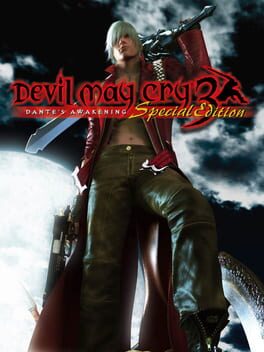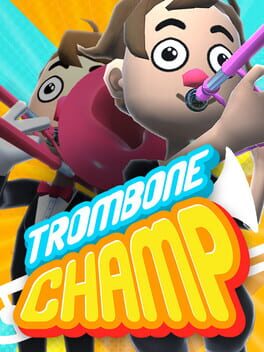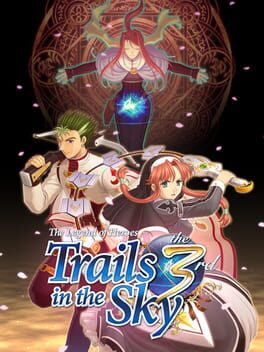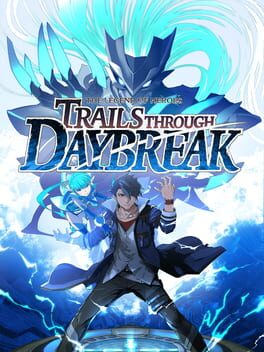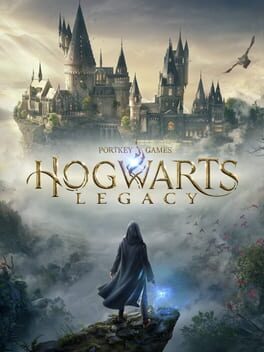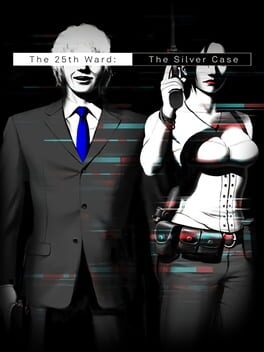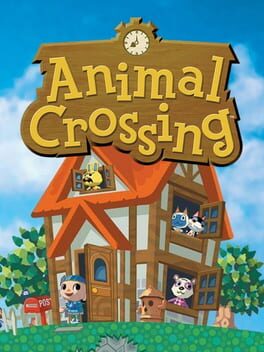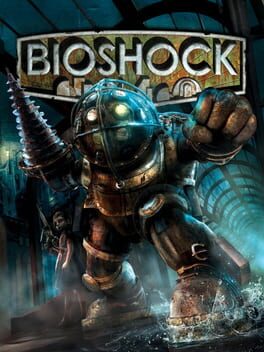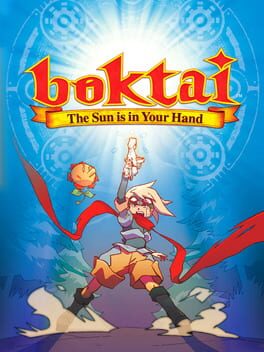webas
329 reviews liked by webas
For the longest time, Devil May Cry 1 was my favorite in the series for its simplicity, aesthetics, and Dante's initial design. This didn't mean that I didn't like DMC3 just as much though, I always enjoyed my playthroughs of the game, watched the cutscenes multiple times, and thought Dante's and Vergil's sibling rivalry made the game's story engaging. After finally getting around to playing the game as Vergil, I think DMC3 is now my favorite in the series.
Dante & Vergil do have some similar weapons and abilities, but enough changes to make them feel different. Right off the gate, Vergil has access to devil trigger which makes the first few missions a breeze to go through. Like with Dante, you still have to buy new moves to unlock his full moveset. I've never fully unlocked either of their movesets, but from what I've played Vergil's is slightly more fun to use and stronger than Dante's. Despite this, Dante is still a blast to play too and I really like the weapons he has too except Nevan, that one didn't really resonate with me gameplay-wise.
DMC3 is a prequel that explains how Dante got the name for his shop and a few other events that happen in the first game. It may not have the most complex or best plot ever, but in this story, Dante and Vergil steal the show. Personality-wise, Dante is at his peak here. His silly quips towards the other characters and the situations he gets in are genuinely funny. His goofy personality with the blend of getting serious when he needs to add that level of realism to Dante which is why he is one of my favorite video game characters. Besides being extremely quotable, Vergil is a fantastic villain whose tragic backstory, more serious personality, and his approach to gaining more power make him a masterclass rival to Dante and a lovable villain. I always looked forward to seeing the sons of Sparda banter with each other and the boss fights you get with Vergil are easily the best parts of the game. The final battle is a very intense, climactic finale that is fun and challenging to fight with an ending that will give you an emotional punch to the gut.
Devil May Cry 3 is a fantastic prequel and character action game that is one of the best in the genre defined by its enthralling gameplay and characters. I'd rank it an SSS.
Dante & Vergil do have some similar weapons and abilities, but enough changes to make them feel different. Right off the gate, Vergil has access to devil trigger which makes the first few missions a breeze to go through. Like with Dante, you still have to buy new moves to unlock his full moveset. I've never fully unlocked either of their movesets, but from what I've played Vergil's is slightly more fun to use and stronger than Dante's. Despite this, Dante is still a blast to play too and I really like the weapons he has too except Nevan, that one didn't really resonate with me gameplay-wise.
DMC3 is a prequel that explains how Dante got the name for his shop and a few other events that happen in the first game. It may not have the most complex or best plot ever, but in this story, Dante and Vergil steal the show. Personality-wise, Dante is at his peak here. His silly quips towards the other characters and the situations he gets in are genuinely funny. His goofy personality with the blend of getting serious when he needs to add that level of realism to Dante which is why he is one of my favorite video game characters. Besides being extremely quotable, Vergil is a fantastic villain whose tragic backstory, more serious personality, and his approach to gaining more power make him a masterclass rival to Dante and a lovable villain. I always looked forward to seeing the sons of Sparda banter with each other and the boss fights you get with Vergil are easily the best parts of the game. The final battle is a very intense, climactic finale that is fun and challenging to fight with an ending that will give you an emotional punch to the gut.
Devil May Cry 3 is a fantastic prequel and character action game that is one of the best in the genre defined by its enthralling gameplay and characters. I'd rank it an SSS.
dmc3 lies in the center of a hinge point in action game design, wedding the linear structures and rigid scenarios of before to a novel, thrillingly expressive combat system. much in the way the original dmc opened the door for nuanced and free-flowing aggression divorced from the three-hit combos of the past, so too did dmc3 give birth to staggering flexibility in combo composition and approach. the buttery smooth interruptible frames on each attack, the instantaneous weapon switching mid-combo, and the subtle additions of so many cute pieces of kit (the crazy combos! riding enemies! swinging on the pole!) comprise just the basics for how rich dmc3's combat can get.
of the updates to the first two games, the most innovative is the style system, which undergirds much of that aforementioned flexibility. this mechanic lets the player select a set of contextual actions to bind to the circle button, where each set fundamentally upheaves dante's capabilities. while the early-game toolkit for each style is restrictive, the fully-upgraded variants of each of the core styles offers a wealth of fresh options to those willing to dig. of these the most interesting are swordmaster and royalguard, the former of which gives dante a full secondary button of attacks (including aerial raves, blessedly rescued from dmc2) while the latter imbues dante with a powerful parry and rage mechanic. what separates dante's parry from many modern implementations is the stricter timing for successful parries versus blocks with chip damage, as well as the ability to release all stored rage at once with strict timing in an extremely potent "just release." the trickster and gunslinger abilities are also equally interesting, although I personally did not invest a lot of time in gunslinger, while trickster mainly serves as additional evasion for those who want to supplant dante's built-in dodge roll and jumping i-frames (which is not to say I didn't use it! I used it plenty, and air trick is cool af).
however, dmc3 still resides within the classic character action structure of item puzzles, interconnected areas, and hidden secrets strewn throughout the demon tower central to the game's narrative. like I mentioned in last year's ninja gaiden black review, this structure still dominated the burgeoning character action genre up through the end of the ps2 era. this essential contradiction between stiff scenarios and loose gameplay systems both makes dmc3 a fascinating relic of its era as well as a harder sell for someone first exposed to the genre through metal gear rising revengeance or one of the bayonettas.
the first place this becomes apparent is in the enemy design. dmc3's main popcorn enemies (the hells) help buoy the game's reputation as a combo showcase while also being formidable foes in their own right, especially the lusts with their hectic pace and dashing slices as well as the teleporting, lumbering sloths. however, the remaining foes veer into requiring stricter strategies for their defeat. the blood-goyles, for instance, mandate that the player shoot their intangible forms repeatedly until calcifying into a hardened form that dante can damage. the soul eaters are another good example of this, where they exist in an gaseous mist until dante turns his back to them, allowing them to gel into a demonic squid and charge at dante from behind. these enemies change the combat from being very player-driven to rather enemy-driven when they appear. the encounters themselves also often avoid being pure combat arenas in favor of including specific objectives, such as fighting on the runaway temperance wagon while enigmas take potshots at you from a separate rail, or the late-game hourglass fight that reverses the flow of time if you fail to clear the room in time. these areas further predicate the player's success on their ability to adapt to a specific context rather than twist the pace of the fight to match their preferences.
this is not necessarily an appealing proposition to those hoping to spend the entire game freestyling to their heart's content, and I sympathize with this point of view. however, because dante is restricted to two guns, two weapons, and a single style, the ordering of fixed encounters with predictable enemy arrangements and locations creates an interesting dilemma for the player when selecting a loadout. the desire to use comfortable tools clashes with the need to select optimal arrangements to deal with these more puzzle-like enemies, but with the vast variety of options at dante's disposal, the choices rarely feel prescribed. the soul eaters may be quickly dispatched by the handguns' backwards shot in the gunslinger style, but the player could also find spots in the environment to trap them in order to combo off of (such as the balcony railing in the altar of evil room), or they can use a few of their devil trigger orbs for a powerful devil trigger explosion. exploiting the environment and synergizing a build to match whatever encounters you're struggling with adds a mindfulness to the otherwise-impulsive combat.
exploring different loadouts for different scenarios becomes even more important when it comes to the game's many bosses. each of the bosses runs the gamut in terms of what skills they require from the player, and with that comes exploring the separate tools that work best with each. beowulf, for example, has a three-hit combo in his first phase that can easily be air parried to store up a massive just release, taking off an excessive amount of health (nearly a third on DMD difficulty!). alternatively, I found that beowulf's powerful phase 2 attacks frequently crushed my guarding, and thus found myself using trickster more often to evade the frequent wooden cages he brings crashing from the sky. cerberus at first glance seemed apt for switch canceling between the rifle and the handguns, but I also found merit in maximizing DPS with the swordmaster style, alternating rebellion and agni & rudra in the air to take out each head as quickly as possible. admittedly these are two of the more robust bosses; fights like nevan and vergil err more on the side of call-and-response, where the player can use basically any tactic as long as they can respond to the movesets of each, while the late-game doppleganger centers environmental interaction with lights on the field that are used to stun the boss. while these bosses rely less on loadout experimentation, they still require attention to detail by the player in order to maximize damage output, locate weak positions, and learn proper spacings.
dante must die, the final difficulty mode, pushes the element of loadout creation and room routing to both its highest and lowest points. unquestionably DMD's balancing is far too skewed in favor of buffing up enemy health to pure sponge levels. when it comes to rooms primarily consisting of the hells, this gives the player some room to breathe in terms of constructing more elaborate combos, but at the same time the length of these encounters and the diminished stagger on enemies that have entered their devil trigger makes repeated jump-canceled moves a safer option. enemies such as the fallen go from tests of aerial mastery to slogging through the same repeated inputs in between waiting for their sword spin to finish. the tedium approaches agony in the latter half of the game, where a boss like geryon with an interesting multi-phase moveset and time-slow traps transforms into a claustrophic nightmare where the only reasonable way to approach it itemless is by stunlocking it in a loop. the chessboard scenario late in the game takes the awesome concept of fighting off a full set of chess pieces (including pawns that respawn as other units if you let them reach the board's end) to an obnoxiously long war of attrition repeatedly spamming killer bee on the king. dmd heightens the contradiction between rigid scenario and expressive gameplay to such an extent that I don't necessarily think it's worth pursuing for most people.
by comparison, very hard was incredibly enjoyable and allowed total flexibility in approach, and its status as the american hard mode and lack of enemy DT made decision-making and routing less of an issue. that's totally fine! the game bursts to its seams with combat features that getting to freestyle more often isn't a detriment in the slightest. however, it must be said that getting to fight for my life through dmd, balancing issues aside, did satisfy that unique sense of routing and pre-planning that few others in the genre can attest to. the sheer difficulty and bulky enemies led me to incorporate techniques I would otherwise ignored, from guard-canceling reverb shocks with nevan to experimenting with artemis' upgrades in the gunslinger style; I still have so much to learn in terms of experimenting with each aspect of dante's toolkit. managing devil trigger as a resource also becomes so much more essential on dmd given the massive power of the DTE and its usefulness both for quick health and as a shield of sorts when mitigating an unavoidable attack. reading and watching the sheer variety of strategies across the game has become a meta-feature of the game's depth that has enraptured me since I began delving more into the game myself over the last few months. even the chessboard has a reasonable quicksilver strat, though to say this makes the fight significantly more interesting may be overselling it. dmc3's status as the harbringer of player-driven combat expression while still remaining entrenched in enemy-driven scenario solutions gives it a unique mechanical blend that cements it as an iconic pillar of the genre.
I certainly wouldn't hold it over anyone if they wanted to try the switch port and how it allows the player to use their entire arsenal simultaneously; the mayhem you can get up to is astonishing. hell, if I play dmd again it might be on that port just to see how it fundamentally changes the experience (I've heard that it evens out much of the annoying shit, especially regarding bosses). there certainly is something worth investigating here in its original form though that hasn't been replicated since; newer titles like astral chain that lean into the adventure elements are doing so having absorbed over a decade of AAA tropes since dmc3's release, and fresh titles like bayonetta 3 compartmentalize their setpieces while dmc3 makes them part and parcel with the combat. although the contradictory nature of this particular flavor of 3D action has unsurprisingly gone out of style, I still feel affectionate to the way it ushered in our modern conception of stylish combat while paying tribute to the RE-derived scenario design all these games owe so much to.
of the updates to the first two games, the most innovative is the style system, which undergirds much of that aforementioned flexibility. this mechanic lets the player select a set of contextual actions to bind to the circle button, where each set fundamentally upheaves dante's capabilities. while the early-game toolkit for each style is restrictive, the fully-upgraded variants of each of the core styles offers a wealth of fresh options to those willing to dig. of these the most interesting are swordmaster and royalguard, the former of which gives dante a full secondary button of attacks (including aerial raves, blessedly rescued from dmc2) while the latter imbues dante with a powerful parry and rage mechanic. what separates dante's parry from many modern implementations is the stricter timing for successful parries versus blocks with chip damage, as well as the ability to release all stored rage at once with strict timing in an extremely potent "just release." the trickster and gunslinger abilities are also equally interesting, although I personally did not invest a lot of time in gunslinger, while trickster mainly serves as additional evasion for those who want to supplant dante's built-in dodge roll and jumping i-frames (which is not to say I didn't use it! I used it plenty, and air trick is cool af).
however, dmc3 still resides within the classic character action structure of item puzzles, interconnected areas, and hidden secrets strewn throughout the demon tower central to the game's narrative. like I mentioned in last year's ninja gaiden black review, this structure still dominated the burgeoning character action genre up through the end of the ps2 era. this essential contradiction between stiff scenarios and loose gameplay systems both makes dmc3 a fascinating relic of its era as well as a harder sell for someone first exposed to the genre through metal gear rising revengeance or one of the bayonettas.
the first place this becomes apparent is in the enemy design. dmc3's main popcorn enemies (the hells) help buoy the game's reputation as a combo showcase while also being formidable foes in their own right, especially the lusts with their hectic pace and dashing slices as well as the teleporting, lumbering sloths. however, the remaining foes veer into requiring stricter strategies for their defeat. the blood-goyles, for instance, mandate that the player shoot their intangible forms repeatedly until calcifying into a hardened form that dante can damage. the soul eaters are another good example of this, where they exist in an gaseous mist until dante turns his back to them, allowing them to gel into a demonic squid and charge at dante from behind. these enemies change the combat from being very player-driven to rather enemy-driven when they appear. the encounters themselves also often avoid being pure combat arenas in favor of including specific objectives, such as fighting on the runaway temperance wagon while enigmas take potshots at you from a separate rail, or the late-game hourglass fight that reverses the flow of time if you fail to clear the room in time. these areas further predicate the player's success on their ability to adapt to a specific context rather than twist the pace of the fight to match their preferences.
this is not necessarily an appealing proposition to those hoping to spend the entire game freestyling to their heart's content, and I sympathize with this point of view. however, because dante is restricted to two guns, two weapons, and a single style, the ordering of fixed encounters with predictable enemy arrangements and locations creates an interesting dilemma for the player when selecting a loadout. the desire to use comfortable tools clashes with the need to select optimal arrangements to deal with these more puzzle-like enemies, but with the vast variety of options at dante's disposal, the choices rarely feel prescribed. the soul eaters may be quickly dispatched by the handguns' backwards shot in the gunslinger style, but the player could also find spots in the environment to trap them in order to combo off of (such as the balcony railing in the altar of evil room), or they can use a few of their devil trigger orbs for a powerful devil trigger explosion. exploiting the environment and synergizing a build to match whatever encounters you're struggling with adds a mindfulness to the otherwise-impulsive combat.
exploring different loadouts for different scenarios becomes even more important when it comes to the game's many bosses. each of the bosses runs the gamut in terms of what skills they require from the player, and with that comes exploring the separate tools that work best with each. beowulf, for example, has a three-hit combo in his first phase that can easily be air parried to store up a massive just release, taking off an excessive amount of health (nearly a third on DMD difficulty!). alternatively, I found that beowulf's powerful phase 2 attacks frequently crushed my guarding, and thus found myself using trickster more often to evade the frequent wooden cages he brings crashing from the sky. cerberus at first glance seemed apt for switch canceling between the rifle and the handguns, but I also found merit in maximizing DPS with the swordmaster style, alternating rebellion and agni & rudra in the air to take out each head as quickly as possible. admittedly these are two of the more robust bosses; fights like nevan and vergil err more on the side of call-and-response, where the player can use basically any tactic as long as they can respond to the movesets of each, while the late-game doppleganger centers environmental interaction with lights on the field that are used to stun the boss. while these bosses rely less on loadout experimentation, they still require attention to detail by the player in order to maximize damage output, locate weak positions, and learn proper spacings.
dante must die, the final difficulty mode, pushes the element of loadout creation and room routing to both its highest and lowest points. unquestionably DMD's balancing is far too skewed in favor of buffing up enemy health to pure sponge levels. when it comes to rooms primarily consisting of the hells, this gives the player some room to breathe in terms of constructing more elaborate combos, but at the same time the length of these encounters and the diminished stagger on enemies that have entered their devil trigger makes repeated jump-canceled moves a safer option. enemies such as the fallen go from tests of aerial mastery to slogging through the same repeated inputs in between waiting for their sword spin to finish. the tedium approaches agony in the latter half of the game, where a boss like geryon with an interesting multi-phase moveset and time-slow traps transforms into a claustrophic nightmare where the only reasonable way to approach it itemless is by stunlocking it in a loop. the chessboard scenario late in the game takes the awesome concept of fighting off a full set of chess pieces (including pawns that respawn as other units if you let them reach the board's end) to an obnoxiously long war of attrition repeatedly spamming killer bee on the king. dmd heightens the contradiction between rigid scenario and expressive gameplay to such an extent that I don't necessarily think it's worth pursuing for most people.
by comparison, very hard was incredibly enjoyable and allowed total flexibility in approach, and its status as the american hard mode and lack of enemy DT made decision-making and routing less of an issue. that's totally fine! the game bursts to its seams with combat features that getting to freestyle more often isn't a detriment in the slightest. however, it must be said that getting to fight for my life through dmd, balancing issues aside, did satisfy that unique sense of routing and pre-planning that few others in the genre can attest to. the sheer difficulty and bulky enemies led me to incorporate techniques I would otherwise ignored, from guard-canceling reverb shocks with nevan to experimenting with artemis' upgrades in the gunslinger style; I still have so much to learn in terms of experimenting with each aspect of dante's toolkit. managing devil trigger as a resource also becomes so much more essential on dmd given the massive power of the DTE and its usefulness both for quick health and as a shield of sorts when mitigating an unavoidable attack. reading and watching the sheer variety of strategies across the game has become a meta-feature of the game's depth that has enraptured me since I began delving more into the game myself over the last few months. even the chessboard has a reasonable quicksilver strat, though to say this makes the fight significantly more interesting may be overselling it. dmc3's status as the harbringer of player-driven combat expression while still remaining entrenched in enemy-driven scenario solutions gives it a unique mechanical blend that cements it as an iconic pillar of the genre.
I certainly wouldn't hold it over anyone if they wanted to try the switch port and how it allows the player to use their entire arsenal simultaneously; the mayhem you can get up to is astonishing. hell, if I play dmd again it might be on that port just to see how it fundamentally changes the experience (I've heard that it evens out much of the annoying shit, especially regarding bosses). there certainly is something worth investigating here in its original form though that hasn't been replicated since; newer titles like astral chain that lean into the adventure elements are doing so having absorbed over a decade of AAA tropes since dmc3's release, and fresh titles like bayonetta 3 compartmentalize their setpieces while dmc3 makes them part and parcel with the combat. although the contradictory nature of this particular flavor of 3D action has unsurprisingly gone out of style, I still feel affectionate to the way it ushered in our modern conception of stylish combat while paying tribute to the RE-derived scenario design all these games owe so much to.
Trombone Champ
2022
God Hand
2019
Well, Trails has finally truly impressed me. This is definitely my kinda series after all.
3rd has decent pacing of things happening the entire time, though that is partially helped by its shorter length. The dungeon structure is preferable to FC's and SC's for me, and there is way less backtracking. It has a complex main character and a personal character-driven story. The combat system is mostly similar to FC and SC, but the way it ties into the story here more often is cool. Most of the 3rd music is the best in the series so far for me, especially the final boss theme and the OP.
Every problem I had with FC and SC have been fixed. Nobody is annoying anymore; a lot of the story is a love letter to the Sky games in general. Hell, some characters are better in this game than the previous ones. I even care more about Joshua and Estelle in 3rd than I did in FC and SC.
It's also got the majority of the emotional and dark moments (especially that one door) of Trails in the Sky. I genuinely cried to a few of them, which hasn't happened with Trails so far.
I will be continuing onto Crossbell with high expectations.
3rd has decent pacing of things happening the entire time, though that is partially helped by its shorter length. The dungeon structure is preferable to FC's and SC's for me, and there is way less backtracking. It has a complex main character and a personal character-driven story. The combat system is mostly similar to FC and SC, but the way it ties into the story here more often is cool. Most of the 3rd music is the best in the series so far for me, especially the final boss theme and the OP.
Every problem I had with FC and SC have been fixed. Nobody is annoying anymore; a lot of the story is a love letter to the Sky games in general. Hell, some characters are better in this game than the previous ones. I even care more about Joshua and Estelle in 3rd than I did in FC and SC.
It's also got the majority of the emotional and dark moments (especially that one door) of Trails in the Sky. I genuinely cried to a few of them, which hasn't happened with Trails so far.
I will be continuing onto Crossbell with high expectations.
3 lists liked by webas
